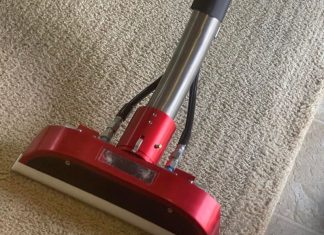“I think that I shall never see a poem as lovely as a tree” –Joyce Kilmer, Trees, 1913.
It’s a poem that everyone remembers. Made an instant classic for its eloquence, tuneful rhymes, and an accurate description of the beauty of its topic, it only strengthened what was already a promising era for poetry. But while Kilmer was quite general with his appreciation, you as a homeowner doubtless plan to be more specific with what should and should not grow upon the gentle slope of your lawn. We spoke in depth with Elk Grove Tree Service so so you guys don’t need to.
Finding the Best Trees for Homeowners
So what do you want from a tree? You want prettiness, to be sure. Some shade. Blossoms that sway and cast dapples over the grass. And what about fruit? Or nuts? Perhaps it’s only one or two of these things that trips your fancy. What probably isn’t high on your wish list, however, is invasive roots. The name itself sounds ominous, like the title of a Hallowe’en story about cold, clawing hands from the earth. Except for today, it isn’t fiction—today it’s real.
Not that invasive roots are seeking to do you any physical harm. They can, however (and do) cause a lot of chaos for an unsuspecting landscape. Trees with invasive roots may inspire one to write poetry. But at what cost? Ah, the list is grim.
Invasive roots can cause:
- Tripping hazards
- Damage to plumbing and electrical lines
- Damage to driveways, patios, and pool decks
- Regular Stockton Tree Trimming
In all fairness, it isn’t the roots that usually cause problems; instead, it’s the soil that gets shifted as they grow. Loose soil that allows roots to lunge quickly can be far more detrimental for a home than, say, a more densely packed soil, such as clay. Before having a tree planted, it’s a good idea for homeowners to know exactly what’s underfoot.
Popular Trees to Choose From
Having said all that, what if you’re looking for the perfect tree—or trees—that do not grow with invasive roots? Is there such a beast? But of course, there is. There’s more than one. Among the more popular choices are specimens like:
Japanese Maple
A temperate climate tree that can grow to about 30 feet, at a rate of about 2 feet per year. These trees are renowned for their blazing autumn colors of red, purple, yellow, and orange. Care is relatively simple, as they do not require pruning and aren’t likely to encounter problems with diseases or insects. Overall, the Japanese Maple is an excellent, friendly tree for homeowners who worry about root invasion.
Kousa Dogwood
Another temperate climate beauty that is enormously popular with homeowners, this time because of a tendency to develop full, flowering canopies that serve as a natural umbrella for the landscape. These canopies can be decorated underneath with fairy lights to concoct an almost magical atmosphere at night. White flowers in the spring, red berries in summer, and an ever-spreading, sweet-smelling bower make the Kousa Dogwood a hard to pass over.
Cornelian Cherry Dogwood
Our third temperate climate tree is the Cornelian cherry. It grows to about 20 feet high with an 18-foot spread. Like the Kousa, Cornelian Dogwoods form a canopy as they grow, making them great for shading and decoration, especially in the garden. Leaves are dark green with bright yellow flowers. This specimen is also hearty, in that it perseveres transplantation and responds rather well to pruning. Its bright red fruit can be used for preserves, or listen to the birds sing as they munch away at it.
Crabapple
Here we have a tree that can handle a bit of heat. It grows well in climate zones 3-8 to anywhere between 20 and 40 feet high. In the spring, its blossoms arrive with shades of red and pink before bursting forth in bright, brilliant whites, reds, and even orange. Foliage is dark green in summer, but like many other trees, it puts on quite the show in autumn, turning to yellow, red, orange, and just about every shade in between. A house-friendly tree that’s pretty to look at but pleasantly fragrant as well, crabapples are always a safe bet.
American Hornbeam
This tree can be found from Maine down to Florida. It tops out at about 30 feet tall. In the summer, its leaves are an alluring shade of blueish green. Autumn gives them over to bright yellow. The American Hornbeam is a terrific choice for landscapes or gardens, as it can be pruned to form its kind of living fence to enhance the privacy of its owners.
Trees without invasive roots are not at all difficult to find. On top of that, most are easy to care for, and quite beautiful in the bargain. If you seek the poetry of a pretty tree but fear what harmful traits they may be hiding, consider one of the species above.















